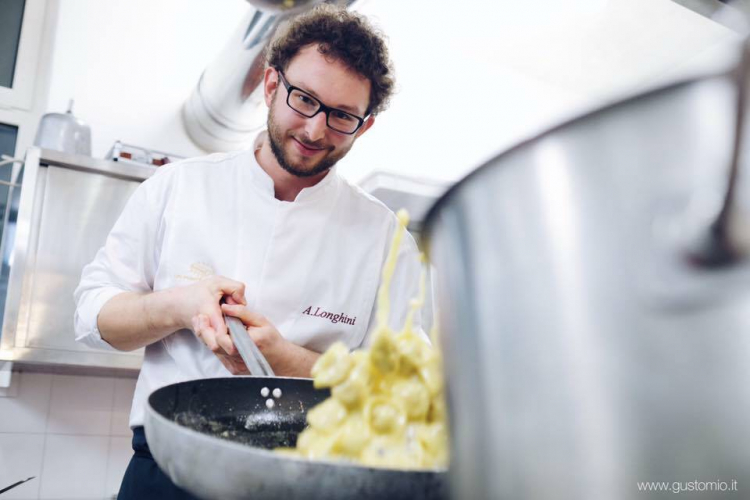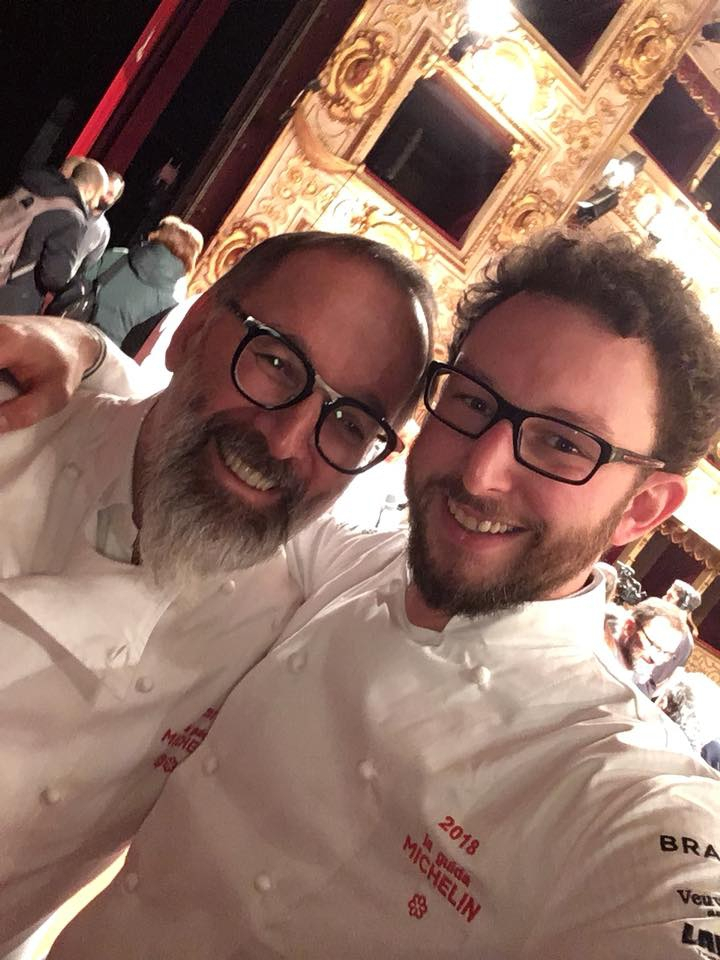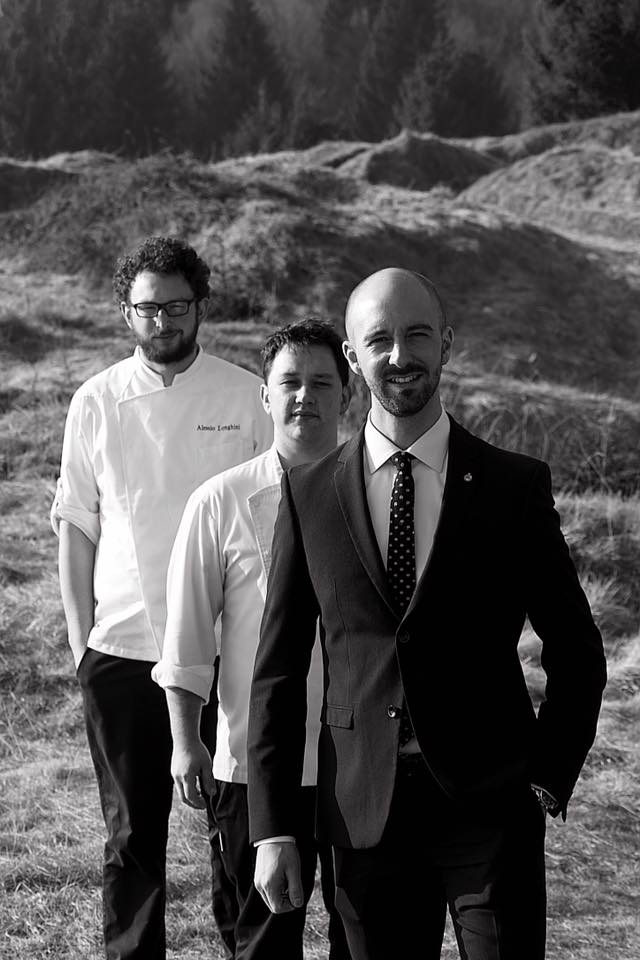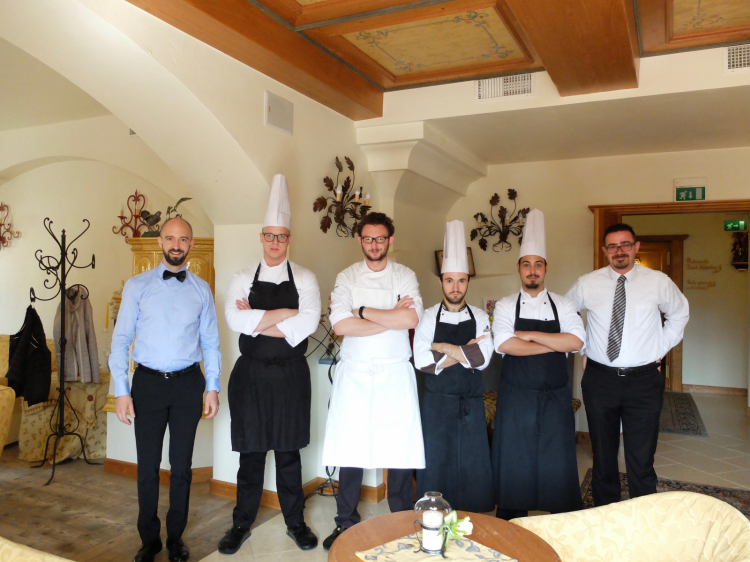We go up the Altopiano di Asiago knowing this is our destination, while for others it’s a starting point on the way to places higher up: the peaks of fine dining. We’ve already written about the great work of Alessandro Dal Degan (see: The fabulous world of Dal Degan), the culinary poet of these lands, “the Altopiano is a world of aromas, Dal Degan is its contemporary demiurge” we said then, and his Barley, earth and water then got the dish of the year award from Guide de L'Espresso 2018. Now other laurels have arrived: meant for Alessio Longhini, born in 1988, young chef of the year according to Michelin.
A rather new face among the culinary stars: on the same occasion the Red Guide gave the first star to his Stube Gourmet, the gourmet restaurant inside hotel Europa in Asiago, where the chef has been working for five years now; Guida di Identità Golose reviews the place since the 2015 edition, the last in print: “there’s a new young chef who’s trying to quickly get a place among the established artists of the restaurant scene”, said Adriano De Grandis at the beginning of his review.
Right before the recent consecration, I paid a visit to this young emerging chef who was turning 29 that very day, lucky him. I got a precise idea: the chef hasn’t chosen to walk the fascinating path of philological recovery of the local culinary heritage on which the intense work of
Dal Degan is based (and here we finish: it makes no sense indulging in improper comparisons), but to trace his own road «45% locally, 55% across the space».
Longhini in other words doesn’t expect his style – which is necessarily in fieri, given he’s so young – to be a cooking philosophy tout court. But he makes good use of the opportunities the surroundings can offer him: «When I first arrived, it was hard to find high quality suppliers in Asiago: nobody worked for restaurants, farmers focused on self-production. Now there’s a different picture and we can make use of it: there’s lots of organic vegetables, we don’t have a kitchen garden so we interact with the local network of food artisans which has appeared in the meantime». An extra-richness the chef knows how to make use of; with one further detail, that is to say the “shifted season” – which because of the climate has peas and broad beans ready in late July, for instance.

Longhini in a photo from a couple of years ago
At hotel
Europa in Asiago
Longhini directs three different culinary offers: the simple menu at
Osteria Europa, seating 45 people, mostly tourists; the typical food at
St.Hubertus, same name as the newly triple-starred restaurant in Alto Adige, but in this case it’s the classic hotel restaurant seating 50 people; and finally a few tables at
Stube Gourmet. Quite a commitment, which the chef faces thanks to his two main strongpoints.
The first is talent, which owes partly to the family where he was born – his cousins are butchers – but mostly to the cv that led him to train in the kitchen with two giants: Corrado Fasolato at Met in Venice, an intense year and a half, in 2010, after some initial steps in Asiago and then a short stop in the Cayman Islands, for eight months; then at the other St.Hubertus, that is to say with Norbert Niederkofler, «he was my greatest teacher» (see also: The great day of Niederkofler and his pupils).

Longhini and his master Niederkofler at the recent Michelin presentation, where they were under the spotlight
So while experience, attitude and some luck led him to structure a sound cuisine, with good skills, neat flavours and no frills but very enjoyable («I’m not too fond of bitter and sour flavours, I prefer sweet notes. And I love the vegetal universe!»), the other strongpoint is in the dining room and goes by the name of
Jgor Tessari. He was born right in Asiago: he’s been at
Stube Gourmet for four years now, best maître according to
Guida Identità Golose 2016, with the following reason: “Some twenty-year-olds leave the village where they were born to conquer the world, and return as pensioners. Some others, after understanding the profession, go back and invite the world to their home, as in the case of
Jgor Tessari in his hometown Asiago. A serious, but never stuffy maître”.

Alessio Longhini, Jacopo Crosta and Jgor Tessari
He was born in 1986 and worked at
Trussardi with
Andrea Berton in the days of the one-two stars. «It’s a massacre here, let’s not think of
Le Calandre», he thought when the opportunity appeared to work with
Alajmo. But the people in Asiago are determined, they can suffer at times: and during the four years and a half with
Max & Raf,
Tessari learnt all the tricks of the job (see also:
Maître di montagna), thanks to a great teacher like
Angelo Sabbadin, who now says: “When I met
Jgor I was very suspicious at first. I don’t like sharing my knowledge and the secrets of my profession which I learned with lots of work and commitment. (But then) he understood that we’re not just serving a bottle of wine, but much more: we offer an emotion, poetry, history, territory, culture, effort, tenacity, commitment”.

Dining room and kitchen staff at Stube Gourmet: left to right Jgor Tessari, Leonardo Causin, Alessio Longhini, Francesco Milano,Federico Vellar, Cristian Doro. Jacopo Crosta and Marcello Zampese are missing
You can read these words in the preface to the beautiful wine list at
Stube Gourmet. The dish menu, instead, offers two options, “
Gadénkhe” (that is to say “memory” in Cimbrian, the language of the Altopiano), with traditional dishes with a new take; and “
Luugar”, that is to say “look”, the more contemporary tasting menu. We chose the latter: and you can enjoy it with your eyes thanks to the photos by
Tanio Liotta.
Translated into English by Slawka G. Scarso